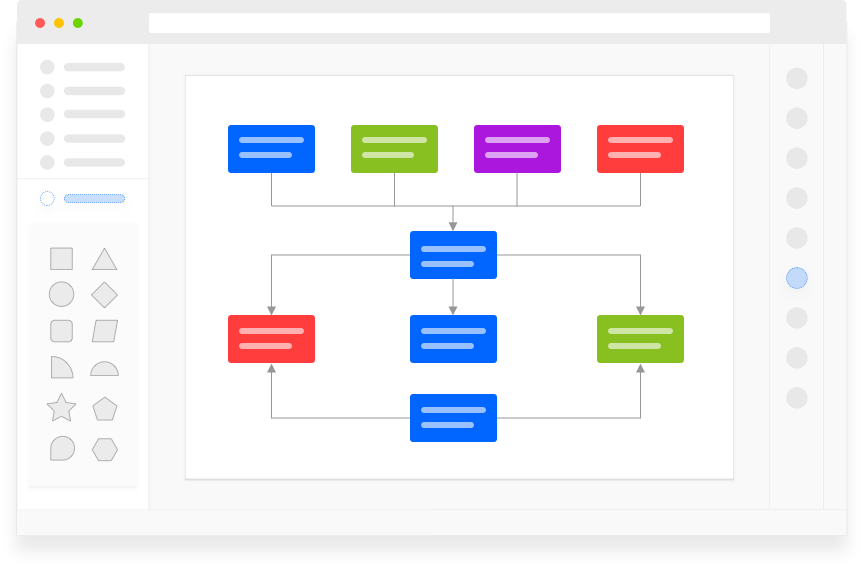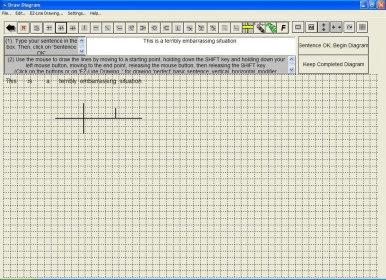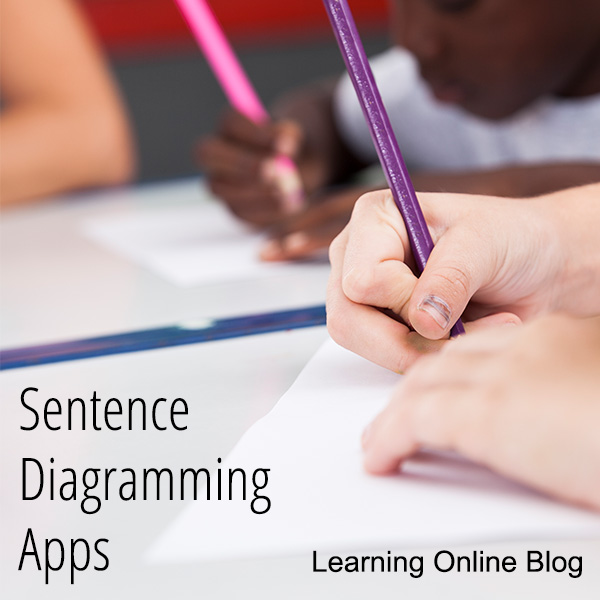OmniGraffle
Sentence a grammatical unit of several words, and provides a narrative, question, comment, etc. It begins with a capital letter and ends with proper punctuation. Sentence diagramming allows you to visually present the sentence part function, which helps you build right sentences. Language Learning solution offers the Sentence Diagrams Library with set of vector stencils for drawing various. Powerful visual communication. With the power to diagram, rapid-prototype, and design, OmniGraffle was made for professionals who need to organize or communicate visually—beautifully.

- Sentence Diagrammer App is the intelligent tool to automatically analyze and diagram sentences! It helps to learn and teach English grammar with beautiful Reed-Kellogg diagrams. Over 2,500 Japanese words and phrases all with sound Quiz challenges Free updates We have over 3,500 users! As one of the top paid apps in its category, you.
- A Sentence diagramming tool helps you to understand the structure fairly accurately. In result it becomes easier appreciating the meaning contained in it. The formatting concept is difficult but the sentence diagramming app is very useful. In the diagram created each word or phrase that modifies another word is lined below the modified word.
Includes a free 14-day trial
With the power to diagram, rapid-prototype, and design, OmniGraffle was made for professionals who need to organize or communicate visually—beautifully.
Diagramming
OmniGraffle is purpose-built for explaining complicated ideas in a beautiful, precise way.
Rapid-prototyping
Quickly create beautiful wireframes to explore ideas accurately.
Design
Powerful tools for creating professional-grade vector graphics.
Diagramming
OmniGraffle is purpose-built for explaining complicated ideas in a beautiful, precise way.
Rapid-prototyping
Quickly create beautiful wireframes to explore ideas accurately.
Design
Powerful tools for creating professional-grade vector graphics.
Intelligent grouping, snapping, and alignment tools allow you to move quickly, without sacrificing accuracy or quality.
Organize, communicate, and share your ideas with stunning visuals.
Mac, iPad, and iPhone can all share the same stencils, projects, and JavaScript automation, allowing you to quickly create or edit a diagram from anywhere.
Reading time: about 6 min
Posted by: Annika Wildenradt
Do you remember when you were in 6th grade and learned all about sentence diagramming? Most kids are taught to draw a horizontal line and split it into two parts, with the sentence subject on the left and the predicate on the right. Then come the modifiers, hanging diagonally off of the original line, and… well, it only gets more complicated from there.

I was one of the few students in my class who thoroughly enjoyed diagramming sentences, especially when they were complex. I would stay in the classroom during recess with my friend Maria and my teacher, Ms. Bergen, to practice diagramming “challenge sentences” on the whiteboard.
My classmates would return, confused, to find a board covered in a seemingly nonsensical mess of colorful lines and scribbled words. Now I wonder if there was a better way to help me retain what I learned and get students who weren’t connecting with the material more involved.
Diagramming sentences: is it helpful?
For decades, educators have been debating whether sentence diagramming helps students learn to read and write.
After it was invented in the late nineteenth century, sentence diagramming flourished in the American classroom for about fifty years, alongside other structured grammar-teaching tactics. But then the voice of the skeptics emerged, arguing that sentence diagramming is a useless practice that hinders rather than aids students in their process of learning the English language and claiming that students best learn through imitation and immersion.
While immersion and imitation of a language can produce strong speakers and writers, a basic understanding of grammatical structures can be a powerful writing tool. It can also be a helpful foundation for students to understand new languages. But all of this is only possible if teachers can successfully engage students in the learning process.
Motivating students with visual grammar
So why aren’t students motivated to learn the rules? I think it’s partially because we’re not presenting grammar in a more flexible, creative way at an early age.
One of the easiest ways to get students engaged and provide them with a creative outlet when they’re learning about grammar is to use Lucidchart, a diagramming platform that’s free for students and teachers to use. Lucidchart is a perfect tool for teachers to make grammar visual and provide students with opportunities to express their creativity as they learn the rules. Read on for a fun, engaging lesson plan that grade-school teachers and parents can use to diagram sentences with their students in conjunction with reading and writing lessons.
Here’s a free sentence diagramming template to get you started:
To see this in the context of an elementary school lesson plan, keep reading! To modify this lesson plan for other grade levels, select age-appropriate texts, and modify the template as needed.
Elementary School Lesson Plan Example: How to Teach Grammar Visually with Dr. Seuss
Because of its repetitive structure, Dr. Seuss’s Green Eggs and Ham is a great book to use to introduce students to grammar basics. Consisting of just 50 unique words, this book follows a simple question-and-answer exchange between two characters—the famous Sam-I-Am and a bitter fellow named Joey whom Sam is trying to convince to eat green eggs and ham. The simple and repetitive sentence structures in this story provide students with a solid framework for understanding and experimentation when it comes to diagramming sentences.
Lesson Objective: Students will be able to categorize parts of speech and build sentence diagrams while exploring grammatical structures.
Part 1: Get to know the text
Before delving into the grammar lesson, help your students become familiar with Green Eggs and Ham by having them read it out loud in pairs. It can be helpful to have one student read the part of Sam and the other the part of Joey. Ask them to pay attention to patterns in the text by presenting the following questions:
- What words, or strings of words, are repeated in the text?
- What words, or strings of words, are used by Sam and not Joey?
- What words, or strings of words, are used by Joey and not Sam?
Part 2: Deconstruct sentences

Now that students are familiar with the text and have started to identify patterns through repetition, they’re ready to start categorizing the words by parts of speech. After a brief refresher on parts of speech, students can drag the words from the sentences into the boxes that correspond with their parts of speech. This exercise helps students practice to recognize parts of speech and serves as helpful preparation for sentence construction.
Part 3: Build sentences with sentence diagrams
In the next part of the lesson, students will be able to diagram their own Dr. Seuss-style sentences to see how the parts of speech fit together. They’ll also be able to learn that English generally follows a consistent sentence structure—noun, auxiliary verb, verb, preposition, article, object.
To do this, students can refer to the third tab of the template where they will find three question-and-answer pairs with certain parts of the sentence that are missing. Encourage students to drag-and-drop various words into the empty spaces to create sentences.
Encourage your students to be creative with this part of the lesson, and read the sentences out loud after they compose them to see if they make sense.
Diagramming Calculator For Sentences
If they create nonsensical question-and-answer pairs, make sure they pay attention to why the questions and answers do not make sense. Is it because they have created an unrealistic scenario, such as eating eggs on top of a goat? Or is it because the words do not fit together at all, such as in the question, “would you eat them in a dark?” As students experiment, they will start to see the value of grammar and putting the correct parts of speech in order when it comes to constructing meaning.
Another good way to help students understand how closely grammar is related to meaning, is by asking them to draw a picture of the scenario they have created. While a picture could easily be drawn of someone riding a goat while eating eggs, it would be difficult to depict someone eating eggs in a dark.
Automatic Sentence Diagramming
When students become comfortable creating sentences by dragging existing words into the template sentences, you can invite them to fill in the blanks with their own words, and create their own make-believe scenarios to fit with Dr. Seuss’ playful plot. They can then read through their creations in pairs, just as they did when they were reading the book at the beginning of the lesson.
With the help of the interactive Lucidchart platform, the students will excitedly discover that by playing with the formal elements of the English language, they can become storytellers as creative and meaningful as Dr. Seuss!